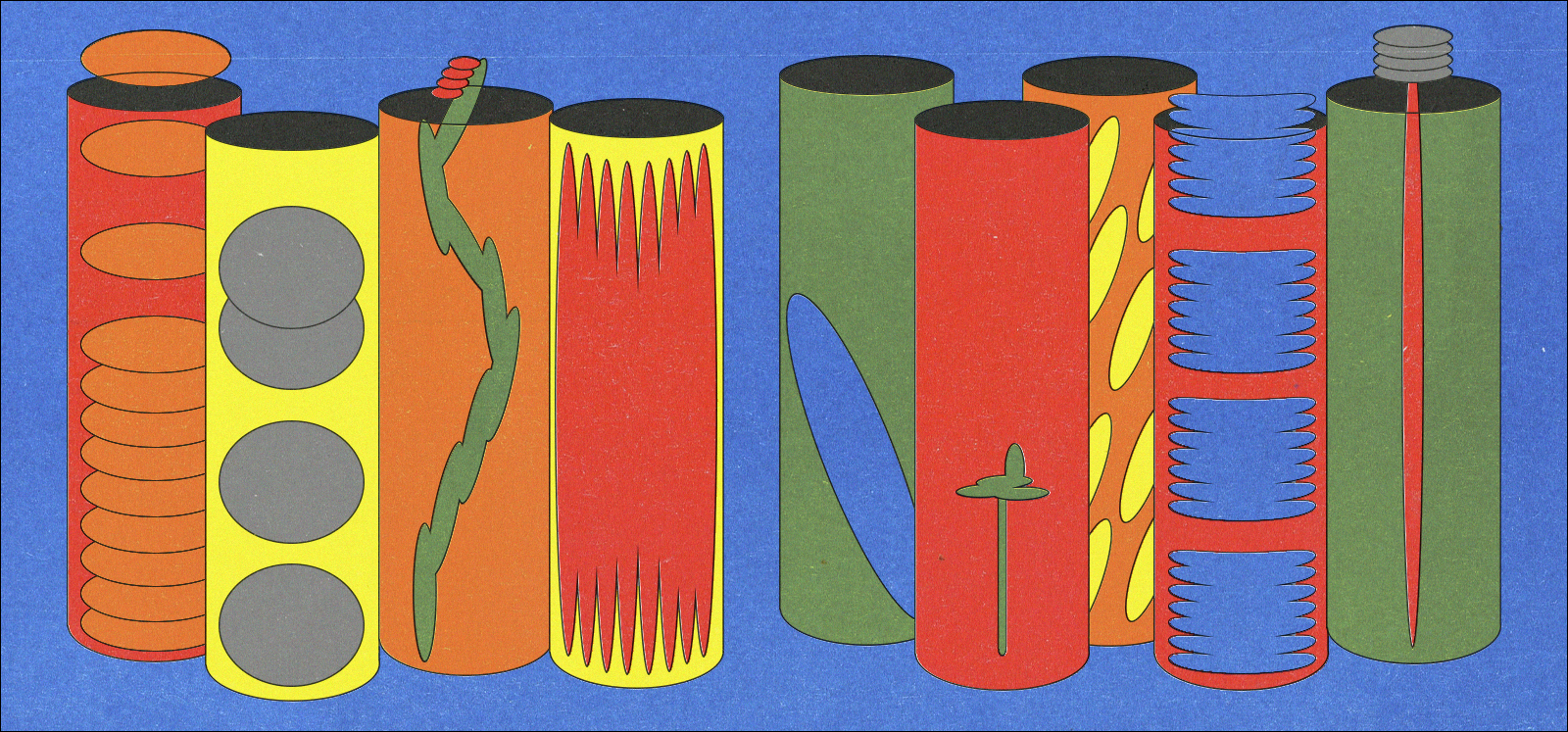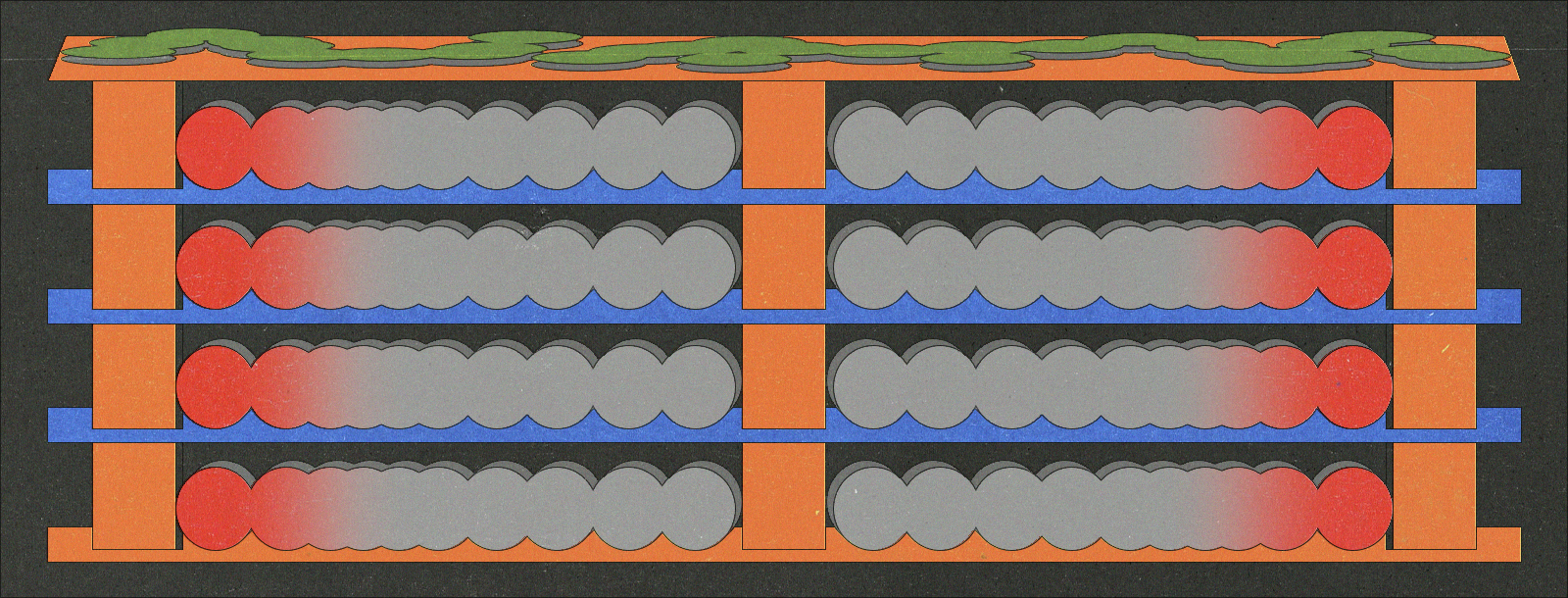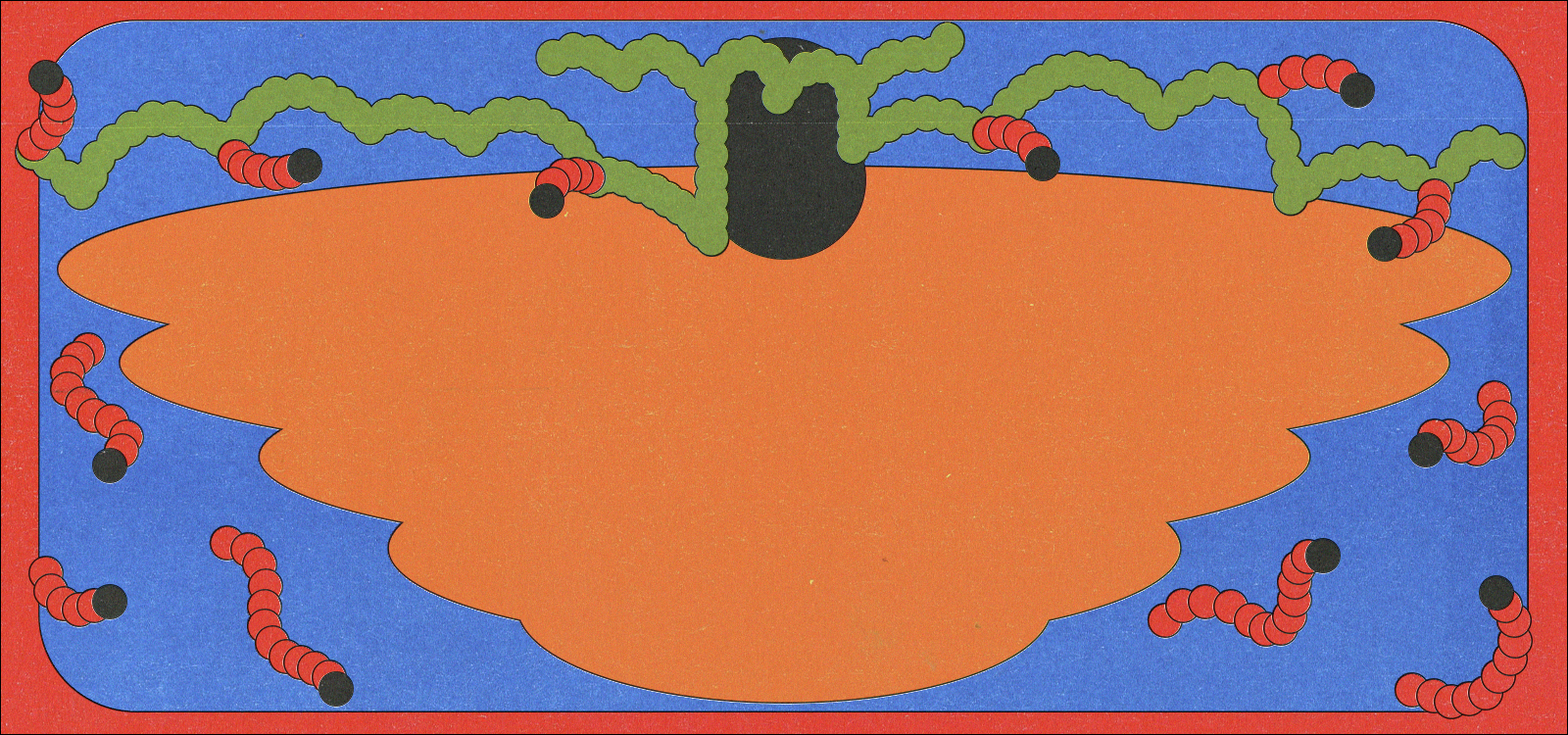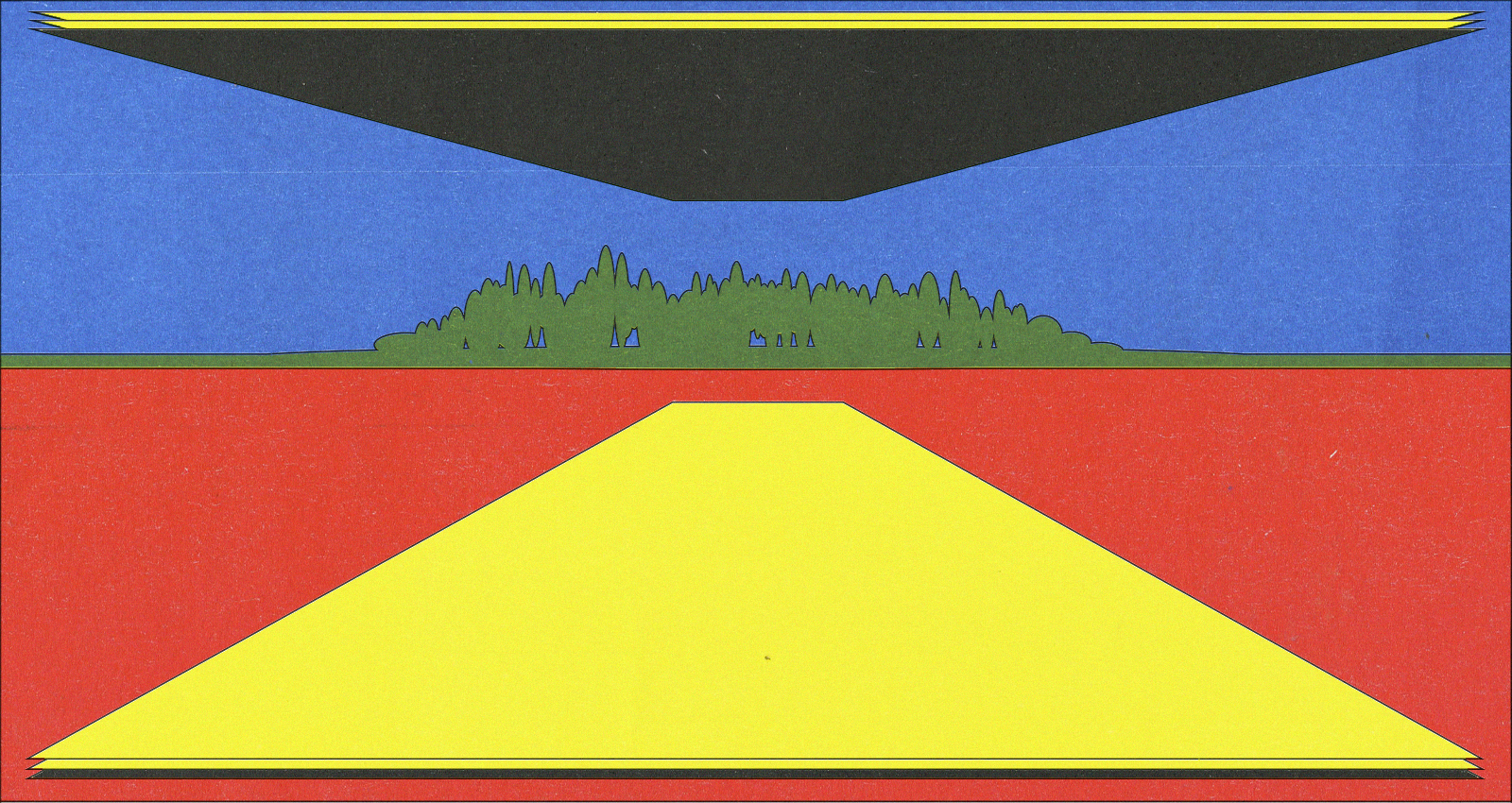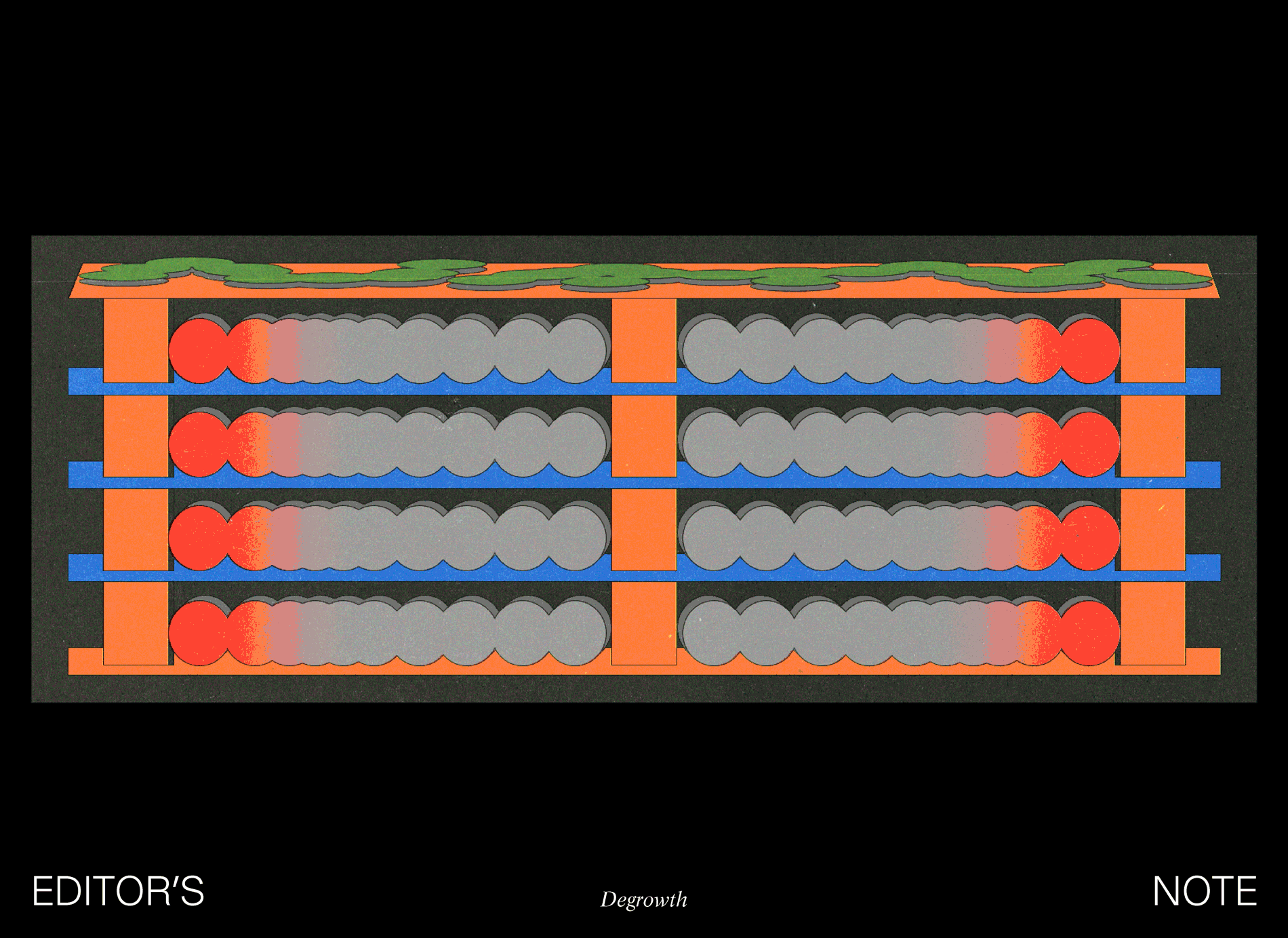MOLD’s series on Degrowth explores how activists, farmers, and scholars have sought to create more resilient communities and food systems in rejection of the drive for infinite economic growth.
Alyshia Gálvez is the author of Eating NAFTA: Trade, Food Policies, and the Destruction of Mexico and a medical and cultural anthropologist who studies the relationship between changing food systems, trade and economic policy and public health. We asked Gálvez to speak with Sean Sherman, the award-winning author behind The Sioux Chef’s Indigenous Kitchen, about his work cultivating the future of indigenous foodways with his organization Indigenous Food Lab.
The future is now, and it is being built on the banks of the Mississippi River in Minneapolis. In the future, as in the past, people are gathering greens and berries from the banks of the river, hunting beaver and geese, and catching a bounty of fresh fish from one of the fifteen thousand lakes in the area. While this future may seem like a return to a slower life, the generators behind it, Sean Sherman, his partner Dana Thompson, and their team are working at a frenetic clip — it is not easy to run an Indigenous Food Lab, build a nonprofit (Natifs) to support a network of indigenous food purveyors and processors, and open a new restaurant, all during a pandemic.
Located just a few blocks from where George Floyd was murdered in a chilling spasm of white supremacist violence, the Indigenous Food Lab offers an example of resilience. Launched in 2020, the vision is to develop a curriculum and teaching space to build knowledge of indigenous foodways and work with tribal communities to develop their own indigenous food projects and grow indigenous food access. They plan eventually to branch out across the continent with projects following the same template emphasizing local indigenous food knowledge and producers. When the pandemic and protests in Minneapolis caused many people to lose their livelihoods and face food insecurity, Sherman and Thompson’s organization stepped into the mutual aid space, feeding 400 people a day in the weeks following the uprising after Floyd’s death. Now, the Indigenous Food Lab provides up to 10,000 meals a week, collaborating with tribal leaders to distribute culturally responsive, nourishing and healthy meals to nine of eleven tribes in the state. In addition to developing a strategy for tackling food insecurity in the short term, these efforts to identify, source and distribute healthy indigenous menus labeled in tribal languages is not only an immediate strategy for addressing food insecurity but part of a larger plan to address diet-related chronic disease, the homogenizing scourge of ultraprocessed foods, and create greater economic stability for indigenous food producers and processors.
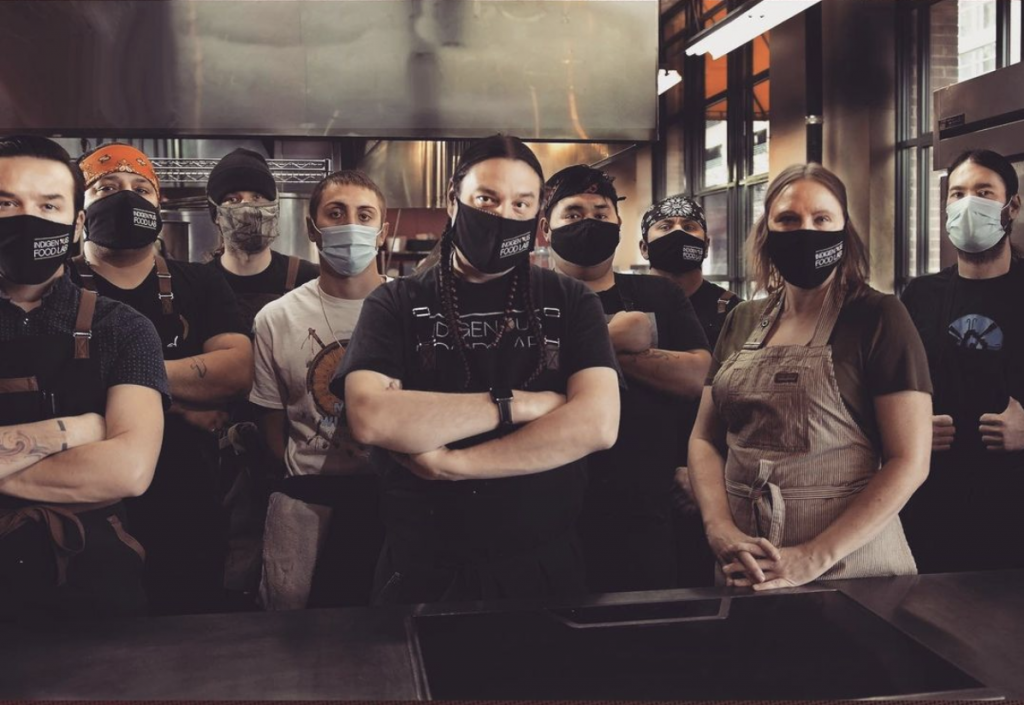
What is more, the model Sherman and Thompson are developing to strengthen local capacity to gather, transmit and grow local food knowledge and systems can be adapted to any setting. Their vision is of a network of indigenous food labs located throughout the Americas, and around the world, promoting food sovereignty, sustainability and cultural autonomy. As Sherman described it, “People would clearly understand how unique all these cultures are and how unique those foods are. The Western diet and the Western education system have always worked towards homogenizing and really just trying to create a whole different way of looking at foods, but we have to really think about the land and the history that we’re on, and celebrating these diversities that are still alive out there.”
Sherman has become an important figure in the decolonized food movement, a loosely affiliated effort to promote local indigenous foodways that has grown in Native American and Latinx communities in the Americas over the last decade, and has counterparts around the world in places where indigenous food knowledge is threatened by the spread of industrialized and capitalist food systems. Decolonized diets are promoted as an environmentally and economically sound response to a broken food system. As Sherman said in an interview with me in March, “You know, when everything goes to hell, we need to make sure we have this localized food system in place.” Sherman inspires those who believe that eating seasonally, locally, and in ways informed by indigenous knowledge is not only healthy, more sustainable and stable even as economies crumble, it is delicious. His book, The Sioux Chef’s Indigenous Kitchen , has won numerous accolades, including a 2018 James Beard Book Award. Not settling for simply sharing his approach to food through recipes, Sherman’s restaurant and nonprofit projects offer a template for building a new kind of food system. This is a radical project that is not always recognized as such.
We’re not in a post-colonial history point yet, we’re still living in colonialism.
A glance at the press the book has received reveals the prevalence of praise like, “I am impressed by Chef Sean Sherman’s dedication to a cuisine that has long been lost” and “Chef Sherman’s book [is] part of an overall call to reclaim the history and culture of indigenous peoples.” The Library Journal recommends purchasing the book as part of food history collections. In these formulations, Sherman’s work is framed as a salvage project, saving or archiving indigenous traditions that have been lost.
In Latin America in the early 20th century, there was a movement among progressive elites called indigenismo, which was characterized by its celebration of the importance of indigenous cultures and ideas to modern Latin American identities. While that seems rather humane, especially when contrasted with concurrent efforts in the United States to displace and exterminate Native American people, it was a project based on appreciating what was being lost, even while accelerating its erasure. Indigenismo’s ostensibly favorable viewpoint toward indigenous people was folded into a larger assimilationist project in which indigenous people could inform ideas about modern national identity only insofar as they succumbed to “modernity,” which was always by definition a project built on anti-Indigenous violence. This is similar to what Chicano anthropologist Renato Rosaldo calls imperialist nostalgia, the longing by agents of colonialism for that which they themselves have destroyed. In most of US history, even benevolent perspectives on indigeneity among non-native people have mostly perpetuated a view that indigenous people are ill-equipped or out of sync with modernity. By placing the indigenous lived experience in a romantic, mythical past, white settlers and their descendants who were not busy actively harming native people, mostly mythologized them, putting them in museums and on pedestals, cooing over their harmony with nature and the earth and their spirituality. Not only are these viewpoints ahistorical, they constitute a different kind of violence: one that truncates the possibility for indigenous futures.

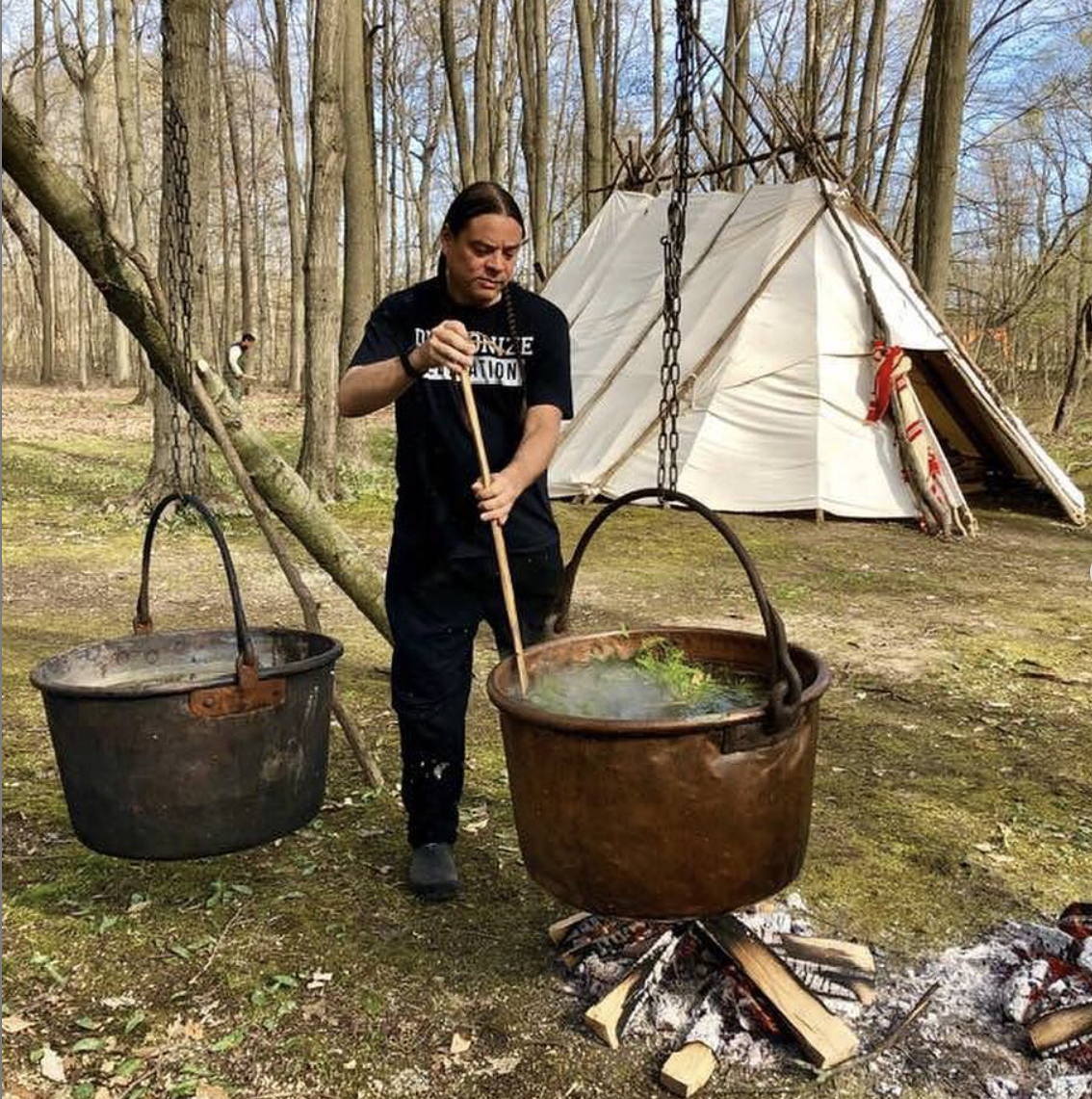
It is possible that some of Sherman’s social media followers don’t know what to make of the Instagrammed scenes of five beavers, donated to the Indigenous Kitchen Lab, being butchered and processed. Some of the posts are not pretty, they even have trigger warnings. Building a restaurant menu and cookbook based on ingredients available in the region prior to European colonialism means no wheat flour, sugar, dairy, and ultraprocessed foods, but that doesn’t mean Sherman’s practice is just about healing herbs and berries, either. It is dynamic, energetic, and sometimes even bloody work— but so is survival.
Like many in Afrofuturist and Chicanx futurist movements, Sherman is busy worrying about and building the future. Settler colonialism isn’t over. “The horrific histories that indigenous peoples have had to endure [are] still [ongoing in] this time period,” says Sherman, “We’re not in a post-colonial history point yet, we’re still living in colonialism.”
For Sherman, this work is a futurist project, not a project of reclamation, at least not entirely, “[We are trying] to really focus on stewarding indigenous global knowledge, keeping it safe and helping to further develop it, [by]helping it to evolve and [by fostering] regeneration.” Since white supremacist settler colonialist violence is ongoing and far-reaching, his is a strategy not only of self-preservation but also of disaster preparation through the building of networks of solidarity, resilience and survivance.
“Indigenous futurism,” coined by author Grace L. Dillon, is, like Afrofuturism and Chicanafuturism, a term that has emerged from science fiction, that is sometimes simplified only as a form of cultural aesthetics. However, these are ideas emerging from literature and social justice movements that are deeply invested in and actively engaged in the actual construction of a more just world, one where there is“a future void of white supremacist thought and the structures that violently oppressed Black communities.” That such visions appear to some as speculative fiction rather than a sincere and deliberate world-making endeavor is not evidence of their unviability but rather the extent to which current racist and capitalist structures have, as Ashanté Reese describes, robbed us of our imaginations.
For these reasons, Sherman’s hustle these months of the pandemic, through this long and cold pandemic winter, is a sign not of an influencer building a business while his social media profile is hot, but a man who has a more meaningful vision, a shared vision informed by his Pine Ridge Lakota upbringing and his decades of collaboration with indigenous communities across and beyond the hemisphere. He knows that a better way is possible, and if there is something he is salvaging, it is our collective possibility for a just future.
